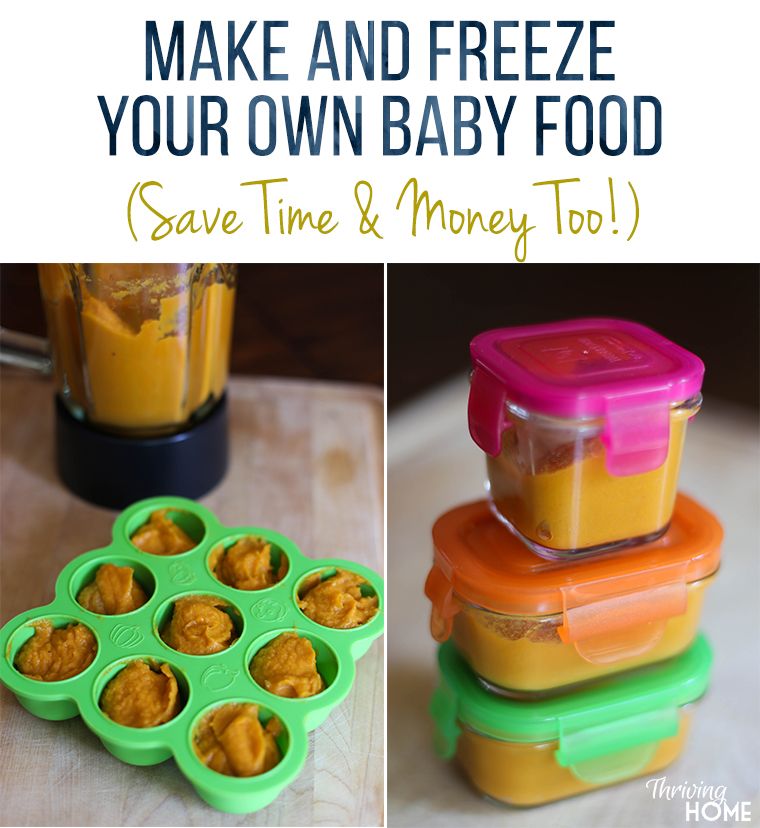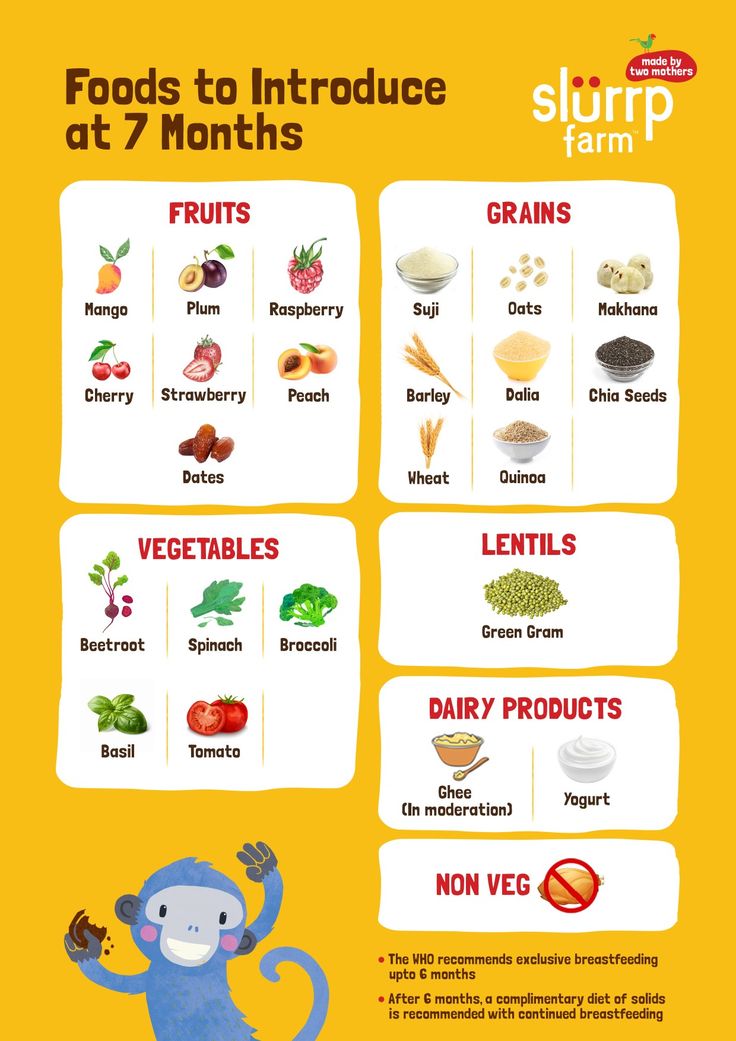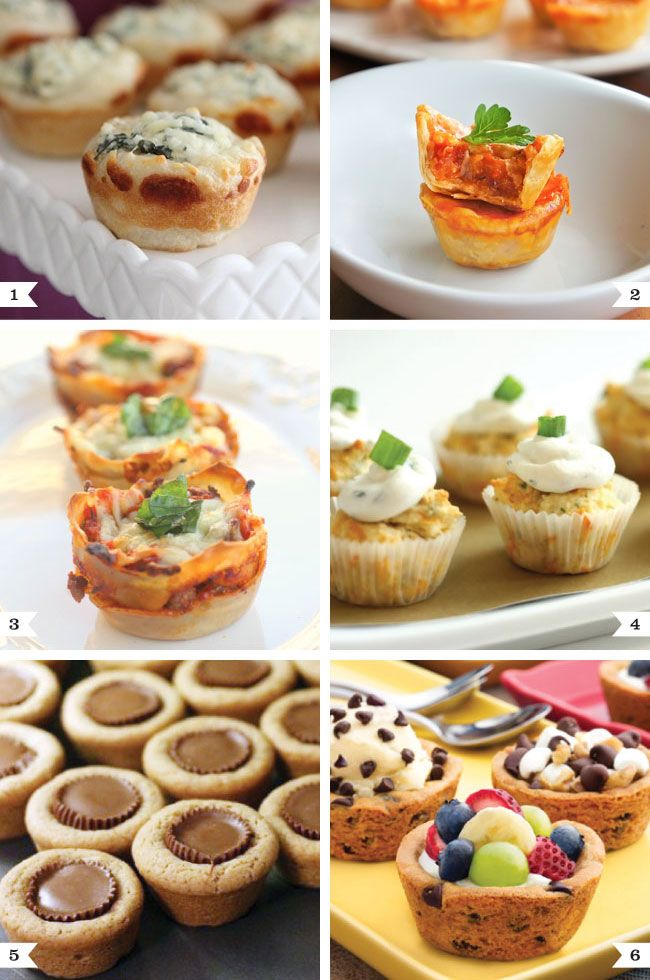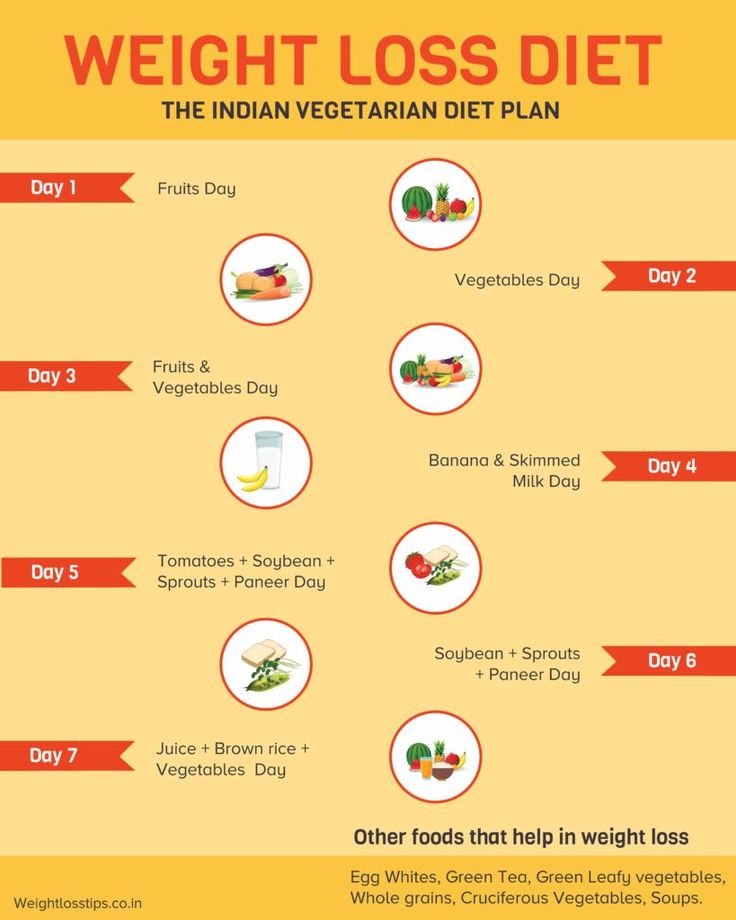Real food for mother and baby by nina planck
Real Food for Mother and Baby by Nina Planck
🖨️ Print post
Real Food for Mother and Baby The Fertility Diet, Eating for Two, and Baby’s First Foods
By Nina Planck
Bloomsbury, 2009
Nina Planck’s landmark book, Real Food: What to Eat and Why, was a bold and enthusiastic promotion of traditional, old-fashioned foods, and especially of long-revered animal fats such as butter and lard. Since the birth of her first child, Planck has now followed up with Real Food for Mother and Baby and, as readers might expect, this book is in part a reprise of many of the key nutrition discussions of her earlier work, with a particular focus on fertility and pregnancy diets. At first glance Planck’s advice seems comprehensive and sound; her upbeat reassurances beam from the pages. She uses all the right words; she invokes the name of Weston Price. Soon though, the reader finds that Planck did not follow these guidelines; she ends up reducing traditional dietary recommendations to such a degree that these shortcuts sabotage the very wisdom that informed her guidelines in the first place. Her predilection for breezy simplification results in serious misrepresentation and confusion.
For instance, “The Fertility Diet” chapter has plenty of good, detailed advice for both men and women who wish to conceive. “If you’re ready to have a baby, change your diet first,” Planck counsels. Be an omnivore for access to diverse nutrients; get those fat-soluble vitamins by eating the right fatty foods; indulge in plenty of clean seafood; and avoid simple carbohydrates in their many industrial guises. For those unsure of their diet, however, Planck falls back to recommending a basic prenatal multivitamin and taking extra folic acid rather than emphasizing the especially important foods that provide these nutrients: “If you eat plenty of real food, that’s all you need to do [take a multivitamin plus folic acid]. If you don’t, I suggest a little cod liver oil for vitamins A and D. If you’re surprised to find yourself pregnant, don’t fret. Just start eating well. Most mothers and babies do just fine. ”
”
Planck reduces her fertility advice to one short paragraph called “Five Easy Pieces,”—a simplified list of only five foods: “For vitamins A, D, and K2, drink whole milk. For vitamin E, be generous with extra-virgin olive oil. For folate, have a green salad. For iodine, eat wild salmon, or any seafood. For zinc and vitamin B12, any red meat will do. It’s just plain real food, and substituting other real foods is fine.”
Planck’s recommendation for whole milk to provide vitamins A, D and K2 has the effect of obscuring and diminishing the conclusions of Dr. Price. Whole milk will provide small amounts of vitamins A, D and K2if—very big if—the cows are eating rapidly growing green grass in the spring and fall; a container of whole milk from the grocery store is unlikely to contain vitamins A and K2, and the vitamin D will have been added. The store milk is likely pasteurized or ultrapasteurized, a process that compromises the lactoglobulins that help the body absorb vitamins A and D.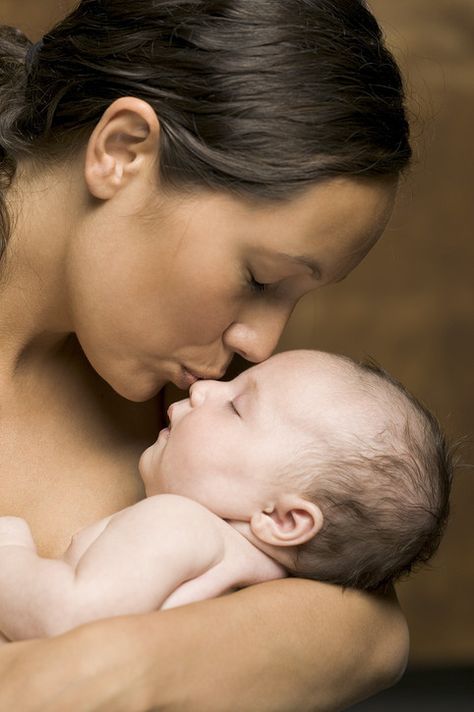 In any event, Dr. Price never recommended whole milk as a good source of A, D and K2 (his Activator X). Raw whole milk from pasture-fed cows is an excellent source of calcium, minerals and a range of other nutrients, but it cannot supply adequate fat-soluble activators to ensure successful reproduction and optimal development in the child—you need cod liver oil, organ meats, certain seafoods and plenty of grass-fed butter for that. So the devil is in the details, which Planck cheerfully glosses over.
In any event, Dr. Price never recommended whole milk as a good source of A, D and K2 (his Activator X). Raw whole milk from pasture-fed cows is an excellent source of calcium, minerals and a range of other nutrients, but it cannot supply adequate fat-soluble activators to ensure successful reproduction and optimal development in the child—you need cod liver oil, organ meats, certain seafoods and plenty of grass-fed butter for that. So the devil is in the details, which Planck cheerfully glosses over.
Thus Planck’s Panglossian assurances regarding dietary requirements and women’s pregnancy and birth outcomes are blindly optimistic, amounting to a kind of deception. The inescapable reality in America today is that we have a crisis in reproductive outcomes directly affected by our generally deplorable diet. Planck is carefree, however: “My own fertility diet was basic. I took extra folic acid and a little cod liver oil. . . Here and there my diary says ‘bison heart’ or some other obscure traditional food, but I can assure you those meals were rare. Most American women get pregnant without eating bison heart.” While that last statement may be strictly true, with current U.S. infertility rates reported at about 25 percent, serious problems like these need accurate advice and serious solutions.
Most American women get pregnant without eating bison heart.” While that last statement may be strictly true, with current U.S. infertility rates reported at about 25 percent, serious problems like these need accurate advice and serious solutions.
Planck introduces the research of Weston Price, and particularly his observations of the nutrition practices of the native peoples he visited who exhibited superb health and reproductive vigor. Unlike Planck, Price was humbled by the great care and attention these people devoted to nurturing the next generation—not just choosing any old milk or meat, but going to great lengths to procure special foods, especially for mothers-to-be. And of course these people were already consuming nothing but nutritious real foods, as well as drinking clean water and breathing clean air in undefiled environments. Nonetheless, their native wisdom demanded that young men and women preparing for marriage, and that pregnant women, new mothers and young children should regularly receive still more of these especially important foods to ensure perfect health for future generations. This philosophy of nurturance (not to mention the long view on our dependence on one another) sounds extraordinary to many today, but the message remains that preparing for childbirth is an undertaking of the highest commitment and dedication.
This philosophy of nurturance (not to mention the long view on our dependence on one another) sounds extraordinary to many today, but the message remains that preparing for childbirth is an undertaking of the highest commitment and dedication.
By stark contrast, Planck was fourteen when she decided to become a vegan in order to lose weight. At precisely the age when young women in the traditional groups Price studied were receiving extra nutrition for their reproductive health, Planck embarked on a voluntary exile into a nutritional wasteland that lasted about a decade. Even after she transitioned from vegan to vegetarian in order to eat fat-free yogurt, her consumption of fat was never more than a trickle of olive oil, and her diet never included animal fats. It was during her stay in London in her twenties and her work in establishing farmers’ markets there that she found herself in the midst of a cornucopia of real foods and finally came to her senses. Nevertheless, the dark legacy of those critically vulnerable years in the nutritional desert is worrying. Although Planck never reflected on the possible damage caused by those years of sub-optimal nutrition, astute readers ought to take heed when regarding their own reproductive health history. Those who have been vegans or lowfat vegetarians need to follow a diet of truly nutrient-dense foods, with keen attention to detail, for considerable time before getting pregnant.
Although Planck never reflected on the possible damage caused by those years of sub-optimal nutrition, astute readers ought to take heed when regarding their own reproductive health history. Those who have been vegans or lowfat vegetarians need to follow a diet of truly nutrient-dense foods, with keen attention to detail, for considerable time before getting pregnant.
Planck addresses the question of environmental pollutants and their effects on the developing fetus, recalling with chagrin the herbicides her parents used on their farm during her childhood. Of course, farm children bear the greatest risk of accumulated chemical exposures and later effects. Rather than focus about what might be residing in her body and how to find dietary protection now that she was newly pregnant, Planck decided instead to think positively and continue on as before. Planck’s situation ought to at least provide a warning to other women who have been exposed to chemicals in their youth: they will need even more care with their preconception diet in order to replenish and protect themselves.
EATING FOR TWO
Right off the bat we learn that Planck is alarmed by how much food she is asked to eat to satisfy most pregnancy dietary advice. With no increase in appetite, although with a great increase in fatigue, she becomes peevish and impatient with recommendations that seem overwhelming to her. Unfortunately, she has forgotten to heed her own advice to change her diet before becoming pregnant.
She reproduces the list of fats and proteins recommended by the WAPF that she typed up for herself and taped to her refrigerator. “Then I tried the diet,” she continues. “Impossible. I couldn’t even manage it for one full day.” The diet that has helped hundreds of mothers give birth to vibrantly healthy babies gets no more than one day’s effort. She doesn’t really like beef and lamb, and no matter how hard she tries, can’t find a way to use lard daily. And there was just too much food.
Turning next to Adelle Davis’s Let’s Have Healthy Children, Planck found the advice more to her liking: “Davis emphasized the elements you needed to build a baby: vitamins, protein, calcium. She suggested you fill in the rest, according to taste and hunger: fruit, brown rice, whole wheat toast, chocolate. (True, she never mentioned chocolate, but women who eat chocolate daily when they’re pregnant have babies who smile more.)”
She suggested you fill in the rest, according to taste and hunger: fruit, brown rice, whole wheat toast, chocolate. (True, she never mentioned chocolate, but women who eat chocolate daily when they’re pregnant have babies who smile more.)”
Planck crankily tries to be the Good Eater: “For a few weeks, I dutifully ate liver twice a week. To make room for all the beef, chicken, fish, eggs, cheese, milk and butter, I reluctantly cut way back on dark chocolate (to a couple of squares), fresh fruit (from five or six pieces down to two or three), and homemade ice cream, now with a mere smidgen of honey or maple syrup. . . Still, I wasn’t happy. Meals were not a pleasure.”
It seems to me odd that Planck should be suffering alone with her mealtime quandaries—where was the baby’s father, or Planck’s mother or aunt or friends? How about some help from our local WAPF chapter? Especially in the days when all she wanted to do was sleep, couldn’t someone else provide tempting, nutrition-packed meals each day? Planck quotes Dr. Price, who wrote of tribal leaders in the Fiji Islands who assigned teenage boys the task of seeking special seafood daily for the expectant mothers to nourish their children. Pregnant women need support and nourishment from their “tribe.”
Price, who wrote of tribal leaders in the Fiji Islands who assigned teenage boys the task of seeking special seafood daily for the expectant mothers to nourish their children. Pregnant women need support and nourishment from their “tribe.”
Instead, Planck plugs on alone and once again comes up with a simplified eating approach to the forty weeks of pregnancy, dividing the period into three “acts.” Each “act” involves the development of a different system of the baby’s organism, and Planck highlights the foods that are particularly necessary at those times: “As long as I was taking cod liver oil, I realized, I didn’t need to eat liver twice a week for vitamins A and D. As long as I had a little grass-fed butter oil…I didn’t need to worry if there was enough butter on my eggs. I could probably skip the extra lard altogether. (Hurrah!) When I took fish oil, I didn’t worry if I wasn’t hungry for salmon.” So Planck herself was not relying on milk for vitamins A and D. But she does not say which brand or how much—a critical omission.
BIRTH DAY
A home-born child herself, Planck naturally planned to deliver her own baby at home. However, after laboring without progress and in constant pain for twenty-four hours, Planck’s midwife calls off the homebirth and drives her to the backup hospital. The baby is in a difficult posterior position, and Planck’s labor remains stalled. Per routine hospital protocols, she is moved along the slow conveyor belt that ends in cesarean section. Those grueling hours in the hospital which finally result in the delivery of baby Julian are painful to read; Planck’s misery was complete.
Unsurprisingly, Planck finds herself weeping daily for a month after the birth. She insists some of this is normal as postnatal hormones readjust— in her own case she must also work the drugs out of her system, and add in a recovery period for major surgery along with her many emotions. While mentioning almost in passing that being well-fed can prevent “mild baby blues” she advises mothers whose depression is severe enough to interfere with caring for their babies that anti-depressant medication may be in order, even if they are breastfeeding. Wouldn’t additional cod liver oil, egg yolks and bone broths be a better solution?
Wouldn’t additional cod liver oil, egg yolks and bone broths be a better solution?
Crushed that her hopes for a peaceful home delivery were dashed, Planck asks, “Why me? Why was my baby the one in this rare position, the one in need of rescue?” No one can presume to know the answer for certain, but we ought to remember that ease of childbirth was one of the key markers of reproductive health noted by Dr. Price in the healthy groups he studied. In the U.S. today, the cesarean rate is over 30 percent, and even higher in teaching hospitals. Without this rescue surgery, how many American mothers and infants simply would not survive the otherwise normal human function of birth?
NURSING
Planck introduces her chapter on breastfeeding with renewed energy and optimism—after a brief trial and error period while she and Julian get the hang of it, nursing is something she finds she does very well. Planck includes lots of information about the components of breast milk—she several times has her own milk tested for DHA content—so important for baby’s developing brain—and finds it consistently high. She includes an illuminating section on the difference between “cache or carry” mammals, which elegantly explains why human mothers and babies do best in close body contact day and night to facilitate the almost constant nursing helpless human babies require.
She includes an illuminating section on the difference between “cache or carry” mammals, which elegantly explains why human mothers and babies do best in close body contact day and night to facilitate the almost constant nursing helpless human babies require.
Detailed nursing techniques, a list of FAQs on breastfeeding, and troubleshooting advice are all sensible and useful. The difficult topic of what to do if you cannot nurse your baby introduces the pros and cons of wet-nurse as Planck’s first choice, human milk bank as second, and home made formula (WAPF’s milk and meat formulas are referenced) third, with powdered, low-iron milk formula as a distant fourth, when there is truly no other choice.
FIRST FOODS
For the most part, Planck uses a “real foods” approach to feeding baby Julian, and she relies on it again for moral support in her own clashes with the pediatrician over Julian’s weight, considered too low at one point, and iron levels, also considered low. The inclusion of these run-ins may be useful for new parents unaccustomed to challenging doctor-sanctioned standards of healthcare for their children, but low weight and low iron levels should be taken seriously as warning bells to make improvements in the diet.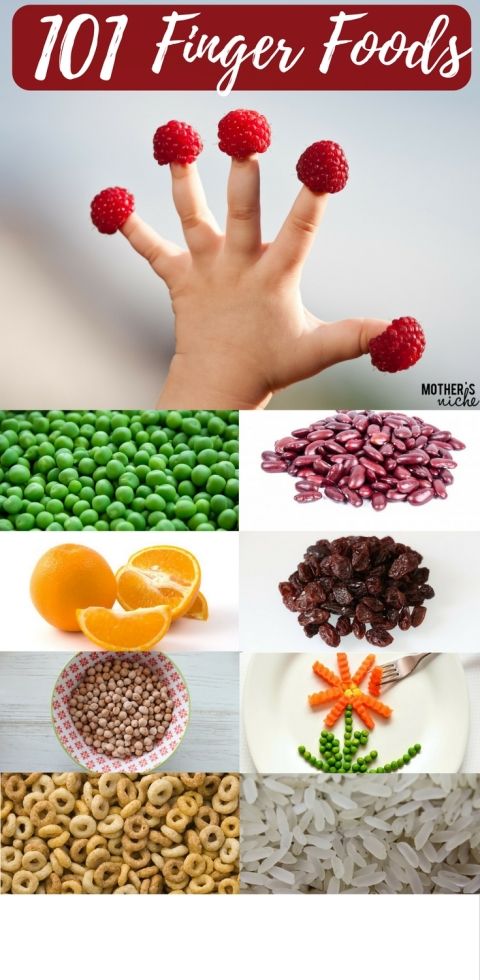
For try as she may to prevent it, Planck allows sugar and white flour products to creep into Julian’s diet—with the inevitable tears from both when Julian demands bread, chocolate and crackers. Part of the difficulty no doubt comes from Planck’s frequent cross-country travel—starting when Julian is only three weeks old—and continuing regularly with him in tow on book tours. All that disruptive travel for an infant makes me wince, but I suppose I’m hopelessly anachronistic. “Hats off” to mothers who manage to travel with beef stew and raw milk for their children, she says, but admits she can’t pull it off.
I was rather surprised that even simpler conveniences for her child seemed too much bother: “Most books will tell you to purée meat in water, stock, or milk and spoon-feed your baby, which is dandy, but it seemed like a lot of work to me. Julian had meat on the bone or in chunks from the start.” The digestive capacities of a child take years to mature, and it is a great help and kindness to at least mince meat in tasty, digestion-enhancing bone broth for him.
Where Planck does become diehard about food selections is in her insistence on lots of fruit and vegetables every day. While giving credence to the superiority of fully ripe, locally grown, pesticide-free produce, she insists that it’s still better to eat plenty of fruit and vegetables every single day, regardless of their provenance. “If your fridge isn’t packed with fresh produce, you won’t have a couple of vegetables at every meal. I’d rather throw away old vegetables—and often do—than do without at supper time. The same goes with fruit. . . In deepest winter, when local produce is scarce and expensive here in New York City, I go directly to the greengrocer, head held high, to buy greens. I have no idea what the carbon footprint of these choices is. But I know the price and convenience calculation without thinking.”
I hate to say it, but if you do think about it, imported greens in winter are for the most part only exercise for your jaws and window dressing for your dinner plate. Most vegetables rapidly lose what uncertain nutrients they have starting minutes after they have been harvested, whether they are organic or not. They won’t gain anything aging in your refrigerator, either. Conventionally grown produce is little more than water, fiber and traces of pesticides and rocket fuel.
Most vegetables rapidly lose what uncertain nutrients they have starting minutes after they have been harvested, whether they are organic or not. They won’t gain anything aging in your refrigerator, either. Conventionally grown produce is little more than water, fiber and traces of pesticides and rocket fuel.
A family is more securely provisioned with a freezer full of raw June butter, liver and lard from autumn-harvested animals, and soup bones for the stock pot to last over the winter, and a pantry filled with raw cheese and lacto-fermented organic vegetables. These foods carry the nutrients of the sun-filled seasons to us in deepest winter, in more reliable form and denser concentration. I wish that Planck could have worked up some real passion insisting on plenty of these foods for pregnant women.
IN CONCLUSION
Real Food for Mother and Baby contains a good deal of useful, easily accessible information not often found in the usual pregnancy preparation books currently available. Unfortunately, by blithely simplifying that advice to meet modern-day circumstances, Planck’s program falsifies the message of Dr. Price, cannot claim to best nourish pregnant women or their children, and in fact shortchanges them of a diet rich in essential nutrients. The truth remains that there are truly no short cuts to this success; most modern couples today will need extra time and extra nutrition—and clear, accurate explanations—to best prepare for parenthood and ensure that their baby enjoys perfect physical form and optimal health. The stakes are very high and the message needs to be very clear and more serious.
Unfortunately, by blithely simplifying that advice to meet modern-day circumstances, Planck’s program falsifies the message of Dr. Price, cannot claim to best nourish pregnant women or their children, and in fact shortchanges them of a diet rich in essential nutrients. The truth remains that there are truly no short cuts to this success; most modern couples today will need extra time and extra nutrition—and clear, accurate explanations—to best prepare for parenthood and ensure that their baby enjoys perfect physical form and optimal health. The stakes are very high and the message needs to be very clear and more serious.
This article appeared in Wise Traditions in Food, Farming and the Healing Arts, the quarterly magazine of the Weston A. Price Foundation, Fall 2009.
🖨️ Print post
Real Food for Mother and Baby by Nina Planck - Ebook
Ebook378 pages4 hours
Rating: 4.5 out of 5 stars
4.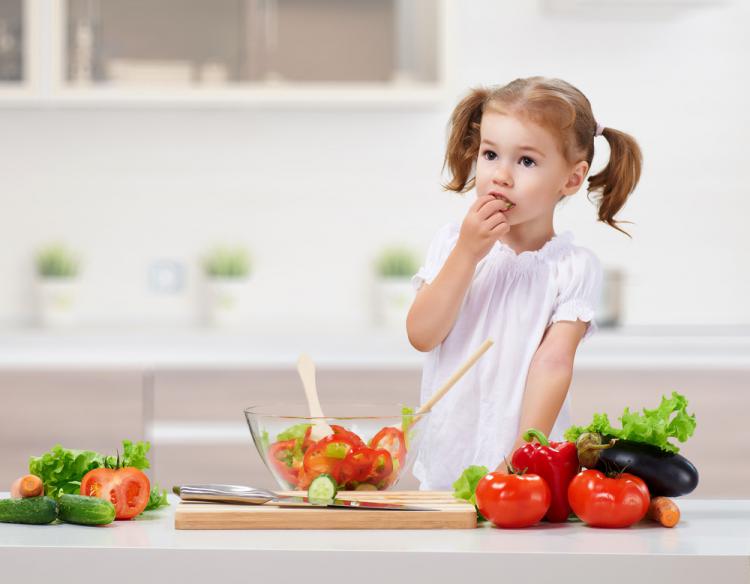 5/5
5/5
()
About this ebook
Ten years ago, Nina Planck changed the way we think about what we eat with the groundbreaking Real Food. And when Nina became pregnant, she took the same hard look at the nutritional advice for pregnancy and newborns, finding a tangle of often contradictory guidelines that seemed at odds with her own common sense.
In Real Food for Mother and Baby, Nina explains why some commonly held ideas about pregnancy and infant nutrition are wrongheaded--and why real food is good for growing minds and bodies. While her general concept isn't surprising, some of the details might be. For expecting mothers and babies up to two years old, the body's overwhelming requirements are fat and protein, not vegetables and low-fat dairy--which is why, for example, cereals aren't right for babies, but meat and egg yolks are excellent.
Nina shares tips and advice like a trusted friend, and in this updated edition, her afterword presents the latest findings and some newly won wisdom from watching her three children grow on real food.
Skip carousel
LanguageEnglish
PublisherBloomsbury USA
Release dateMay 10, 2016
ISBN9781632865717
Author
Nina Planck
Nina Planck, author of Real Food: What to Eat and Why and The Farmer's Market Cookbook is a leading expert on farmer's markets and traditional food. In London, England she created the first farmer's market and in New York City, she ran the legendary Greenmarkets. She has a one-year-old son named Julian, who eats real food.
Related categories
Skip carousel
Reviews for Real Food for Mother and Baby
Rating: 4.25 out of 5 stars
4.5/5
4 ratings4 reviews
alynnk_2
Rating: 5 out of 5 stars
5/5
While I’m not yet at that point in my life where I’m settling down and getting married and having babies, I really enjoyed reading through Real Food for Mother and Baby: The Fertility Diet, Eating for Two, and Baby’s First Foods by Nina Planck.
 It’s loaded with information about food and nutrition while maintaining an easy-to-read style, and perhaps best of all, it doesn’t preach. Planck tells you what she knows – which is, admittedly, a lot, and she brings in the experts to verify what she’s saying, so you don’t have to take only her word on it – and she relates stories about her own pregnancy, but then she leaves it up to you to decide what’s best for your body and your baby.The book is broken down into five sections, beginning with the chapter entitled ‘What is Real Food?’ that starts with a basic explanation of, you guessed it, what the author calls ‘real food’: the old and the traditional. Foods that were eaten long before food became part of an industry, foods that aren’t processed within an inch of their life, and foods that haven’t been enhanced and added-to before they’re sold are the staples of the ‘real food’ diet. Planck then moves on to chapters covering ‘The Fertility Diet’ [what to eat when you’re trying to conceive, and what foods best prepare your body for the rigors of pregnancy], ‘Forty Weeks’ [how the foods you eat can influence your baby’s development], ‘Nursing Your Baby’ [championing the benefits of breastfeeding over formula use], and ‘First Foods’ [introducing your child to something a little more solid].
It’s loaded with information about food and nutrition while maintaining an easy-to-read style, and perhaps best of all, it doesn’t preach. Planck tells you what she knows – which is, admittedly, a lot, and she brings in the experts to verify what she’s saying, so you don’t have to take only her word on it – and she relates stories about her own pregnancy, but then she leaves it up to you to decide what’s best for your body and your baby.The book is broken down into five sections, beginning with the chapter entitled ‘What is Real Food?’ that starts with a basic explanation of, you guessed it, what the author calls ‘real food’: the old and the traditional. Foods that were eaten long before food became part of an industry, foods that aren’t processed within an inch of their life, and foods that haven’t been enhanced and added-to before they’re sold are the staples of the ‘real food’ diet. Planck then moves on to chapters covering ‘The Fertility Diet’ [what to eat when you’re trying to conceive, and what foods best prepare your body for the rigors of pregnancy], ‘Forty Weeks’ [how the foods you eat can influence your baby’s development], ‘Nursing Your Baby’ [championing the benefits of breastfeeding over formula use], and ‘First Foods’ [introducing your child to something a little more solid]. The back of the book also provides a list of resources for further reading on a range of topics, from postnatal depression to autism and allergies and various birthing techniques.Overall, this is a stellar book. Like I said, I’m nowhere near ready for the baby-specific information, but I read this book cover to cover, and it’s now full of post-it flags for easier future reference. I’ve found myself returning to the first chapter on foods basics more than once. A lot of what Planck presents just makes sense, and with so much information and misinformation floating around in the media – eggs are bad! no, wait, eggs are good! – it’s great to have something to fall back on when everything gets confusing. I’ve even broken it out when having baby-related discussions with friends and plan on presenting a copy or two as gifts to friends in the future. And, yeah, maybe I do look forward to using the information for my own personal use some day.
The back of the book also provides a list of resources for further reading on a range of topics, from postnatal depression to autism and allergies and various birthing techniques.Overall, this is a stellar book. Like I said, I’m nowhere near ready for the baby-specific information, but I read this book cover to cover, and it’s now full of post-it flags for easier future reference. I’ve found myself returning to the first chapter on foods basics more than once. A lot of what Planck presents just makes sense, and with so much information and misinformation floating around in the media – eggs are bad! no, wait, eggs are good! – it’s great to have something to fall back on when everything gets confusing. I’ve even broken it out when having baby-related discussions with friends and plan on presenting a copy or two as gifts to friends in the future. And, yeah, maybe I do look forward to using the information for my own personal use some day.donnerlibrary
Rating: 3 out of 5 stars
3/5
Nina Planck is an advocate for what she calls 'real food.
 ' These are the staples of our ancestors, prepared in traditional ways. Fruits, vegetables, eggs, meats, cheese, and milk minimally processed if processed at all. Planck provides compelling arguments for eating this way based on nutritional comparisons.While some of the ideas she presents for general eating and eating during pregnancy fall quite far from mainstream thinking, she does provide science to back up her claims. The stories she shares of her own pregnancy and how it shaped her diet are interesting. Although there were some aspects of her experiences that I would not have shared during my own pregnancy (such as having glasses of wine), I was able to take away some good information from this section of the book.Planck lost me, however, when it came to the section on baby's first foods. Essentially she fed her son chunks of various table foods almost from the beginning of his solid food experience. While I do not doubt the nutritional value of the foods she was feeding him, my concern is that some of the foods she mentioned would present a potential choking hazard.
' These are the staples of our ancestors, prepared in traditional ways. Fruits, vegetables, eggs, meats, cheese, and milk minimally processed if processed at all. Planck provides compelling arguments for eating this way based on nutritional comparisons.While some of the ideas she presents for general eating and eating during pregnancy fall quite far from mainstream thinking, she does provide science to back up her claims. The stories she shares of her own pregnancy and how it shaped her diet are interesting. Although there were some aspects of her experiences that I would not have shared during my own pregnancy (such as having glasses of wine), I was able to take away some good information from this section of the book.Planck lost me, however, when it came to the section on baby's first foods. Essentially she fed her son chunks of various table foods almost from the beginning of his solid food experience. While I do not doubt the nutritional value of the foods she was feeding him, my concern is that some of the foods she mentioned would present a potential choking hazard. I simply cannot imagine letting my eight month old daughter chew on a pork chop! Planck also threw out all conventional wisdom regarding babies and allergies, giving her son many foods before his first birthday that most doctors do not recommend.I enjoyed reading this book and I do feel that I learned something from it. I think each person reading this book will have to find their own comfort level with the information presented and take what they can use while leaving the rest behind.
I simply cannot imagine letting my eight month old daughter chew on a pork chop! Planck also threw out all conventional wisdom regarding babies and allergies, giving her son many foods before his first birthday that most doctors do not recommend.I enjoyed reading this book and I do feel that I learned something from it. I think each person reading this book will have to find their own comfort level with the information presented and take what they can use while leaving the rest behind.ladydzura
Rating: 5 out of 5 stars
5/5
While I’m not yet at that point in my life where I’m settling down and getting married and having babies, I really enjoyed reading through Real Food for Mother and Baby: The Fertility Diet, Eating for Two, and Baby’s First Foods by Nina Planck. It’s loaded with information about food and nutrition while maintaining an easy-to-read style, and perhaps best of all, it doesn’t preach. Planck tells you what she knows – which is, admittedly, a lot, and she brings in the experts to verify what she’s saying, so you don’t have to take only her word on it – and she relates stories about her own pregnancy, but then she leaves it up to you to decide what’s best for your body and your baby.
 The book is broken down into five sections, beginning with the chapter entitled ‘What is Real Food?’ that starts with a basic explanation of, you guessed it, what the author calls ‘real food’: the old and the traditional. Foods that were eaten long before food became part of an industry, foods that aren’t processed within an inch of their life, and foods that haven’t been enhanced and added-to before they’re sold are the staples of the ‘real food’ diet. Planck then moves on to chapters covering ‘The Fertility Diet’ [what to eat when you’re trying to conceive, and what foods best prepare your body for the rigors of pregnancy], ‘Forty Weeks’ [how the foods you eat can influence your baby’s development], ‘Nursing Your Baby’ [championing the benefits of breastfeeding over formula use], and ‘First Foods’ [introducing your child to something a little more solid]. The back of the book also provides a list of resources for further reading on a range of topics, from postnatal depression to autism and allergies and various birthing techniques.
The book is broken down into five sections, beginning with the chapter entitled ‘What is Real Food?’ that starts with a basic explanation of, you guessed it, what the author calls ‘real food’: the old and the traditional. Foods that were eaten long before food became part of an industry, foods that aren’t processed within an inch of their life, and foods that haven’t been enhanced and added-to before they’re sold are the staples of the ‘real food’ diet. Planck then moves on to chapters covering ‘The Fertility Diet’ [what to eat when you’re trying to conceive, and what foods best prepare your body for the rigors of pregnancy], ‘Forty Weeks’ [how the foods you eat can influence your baby’s development], ‘Nursing Your Baby’ [championing the benefits of breastfeeding over formula use], and ‘First Foods’ [introducing your child to something a little more solid]. The back of the book also provides a list of resources for further reading on a range of topics, from postnatal depression to autism and allergies and various birthing techniques. Overall, this is a stellar book. Like I said, I’m nowhere near ready for the baby-specific information, but I read this book cover to cover, and it’s now full of post-it flags for easier future reference. I’ve found myself returning to the first chapter on foods basics more than once. A lot of what Planck presents just makes sense, and with so much information and misinformation floating around in the media – eggs are bad! no, wait, eggs are good! – it’s great to have something to fall back on when everything gets confusing. I’ve even broken it out when having baby-related discussions with friends and plan on presenting a copy or two as gifts to friends in the future. And, yeah, maybe I do look forward to using the information for my own personal use some day.
Overall, this is a stellar book. Like I said, I’m nowhere near ready for the baby-specific information, but I read this book cover to cover, and it’s now full of post-it flags for easier future reference. I’ve found myself returning to the first chapter on foods basics more than once. A lot of what Planck presents just makes sense, and with so much information and misinformation floating around in the media – eggs are bad! no, wait, eggs are good! – it’s great to have something to fall back on when everything gets confusing. I’ve even broken it out when having baby-related discussions with friends and plan on presenting a copy or two as gifts to friends in the future. And, yeah, maybe I do look forward to using the information for my own personal use some day.devourerofbooks
Rating: 4 out of 5 stars
4/5
Nina Planck is a proponent of ‘real food.’ She had even written a book on the topic, and was touring for said book when she discovered she was pregnant.
 As a food activist, Nina did her research about eating before, during, and after pregnancy, as well as feeding young children. When the conventional wisdom sounded wrong to her, she dug deeper to find out what really is best for mothers and babies.This book is broken into 5 parts: What is Real Food; The Fertility Diet; Forty Weeks; Nursing Your Baby; and First Foods. The most important thing to know is probably Nina’s definition of real food. Real food is “old and traditional.” If someone hasn’t been eating it for hundreds of years, you probably shouldn’t either.What I really liked about this book was Nina’s approach. While scientific she was also very relational, sharing her experiences of pregnancy, nursing, and feeding her young baby. She laid out what sorts of foods one should eat and why, but she was not dictatorial about it and suggested certain supplements if you simply cannot eat that food for one reason or another.This book is quite informative and an engaging read at the same time.
As a food activist, Nina did her research about eating before, during, and after pregnancy, as well as feeding young children. When the conventional wisdom sounded wrong to her, she dug deeper to find out what really is best for mothers and babies.This book is broken into 5 parts: What is Real Food; The Fertility Diet; Forty Weeks; Nursing Your Baby; and First Foods. The most important thing to know is probably Nina’s definition of real food. Real food is “old and traditional.” If someone hasn’t been eating it for hundreds of years, you probably shouldn’t either.What I really liked about this book was Nina’s approach. While scientific she was also very relational, sharing her experiences of pregnancy, nursing, and feeding her young baby. She laid out what sorts of foods one should eat and why, but she was not dictatorial about it and suggested certain supplements if you simply cannot eat that food for one reason or another.This book is quite informative and an engaging read at the same time. If you have enjoyed any of Michael Pollan’s books or articles on food and are pregnant, have a young child, or are considering getting pregnant, this is something worth picking up.
If you have enjoyed any of Michael Pollan’s books or articles on food and are pregnant, have a young child, or are considering getting pregnant, this is something worth picking up.
Text mine - LiveJournal
preparations began already in September.
discussed ideas, drew sketches without saving, bought fabric - no synthetics, only linen, cotton, natural wool, velvet, sewing for jewelry, lace, gold cord, feathers, glass beads.
took measurements, not relying on last year's - God forbid, something will wrinkle or pull.
began to be cut in October. excited, as before a first date, they approached with scissors a piece of silk or velvet spread out on the table, even flannel or muslin - there were such originals, although not much - they hesitated, timidly, shifted the scissors from hand to hand, wiped them on aprons sweaty palms, until finally someone, with a desperate clang of scissors, rushed forward, and after that only the crackling of tissue was heard.
they cut and swept everything together, but they carried it to the houses to try it on, waited for the night, tightly hung the windows - no one would have looked in from the street, - they put the children to bed, strictly forbidding them to get out of bed until they were allowed to, in case of urgent need they left there were pots by the beds - plastic and enameled, with a handle - the younger children were stubborn, but the older ones hissed at them, the older ones remembered how, a year or two or three years ago, in violation of the prohibition, they carefully, on tiptoe, climbed out of the room in the middle of the night.
how they crept along the corridor, trying not to breathe and calming their roaring heart, how they tried to look through the crack at the jamb with one eye into the living room where the candle was burning, and where the mother the day before, not allowing anyone to touch, she herself dragged a heavy sewing machine from the closet, pulled it out -under the sofa an old black screen and opened it, blocking off the far corner.
remembered how they stepped from one foot to the other, freezing barefoot on the cold floor, and how the mother, quickly looking out into the corridor, found her firstborn trembling with curiosity and cold, and how, frightened by her face distorted beyond recognition, the firstborn rushed headlong back to the nursery, slammed the door and pushed the bolt with trembling hands.
the next morning the children were boasting to each other, describing the ominous figure in the corner of the living room, hissing and wheezing, trying to convey the terrible whispers coming from behind the screen. they were the lucky ones - those who were caught in the corridor by their mothers or intercepted by their fathers. those who really managed to look into the living room, slightly pulling back the heavy soft curtain, did not boast, walked around pale, with circles under their eyes, and during the break they tried to hide somewhere in the corner in order to feel the calming firmament of the wall with their backs and sides. all the teachers felt sorry for these and did not call them to the blackboard at least until the end of the semester.
all the teachers felt sorry for these and did not call them to the blackboard at least until the end of the semester.
but October was ending, and with it the nightly fittings. after supper on the eve of All Saints' Day, mothers poured a large mug of cocoa for the children and wished good night. after cocoa - it had a slightly strange taste, but the younger children were still happy, and the older ones pretended to be happy and tried to drink cocoa in one gulp without breathing - the children became heavy, sleepy, the younger ones fell asleep right at the table and their parents carried them to the nursery, undressed and put to bed, the elders undressed themselves, although the fingers became rigid, as if made of wood, and could not grasp and unbutton the button on the shirt.
parents covered their children, kissed them, baptized them and left, tightly closing the nursery door behind them. then the fathers hurriedly cleared the table, and the mothers washed the dishes.
having arranged the dishes to dry, the mothers wiped the table with a rag and took out two clean glasses, and the fathers took out a bottle of something specially stored, and they poured some powders from paper bags into their mouths, grimacing and grimacing, and washed down with what they had stored fathers, and then went into the room, went to bed and fell asleep as soundly as their children.
and all night long festivities went on in the city: drums rumbled, tambourines rang, flutes and clay whistles squeaked, firecrackers blared, fireworks flashed and scattered like fiery fountains, and the crowd was an elegant, cheerful, dressed-up crowd: princesses, pirates, peasant women, knights in armor, bullfighters in jackets embroidered with gold, forest maidens in wreaths of grass and gauze, translucent shirts; all in masks - lace, satin, velvet, leather; in gloves, in smart shoes, high boots, patent leather shoes with bows - rode on carousels, on a ferris wheel, on electric cars, bought cotton candy, fried sausages on a stick, donuts in powdered sugar and caramelized, like glass, apples.
and looked, looked into the mirrors placed everywhere, turned around, assessing whether the dress was dexterously sitting, whether the jacket was wrinkling on the back, whether the silk ribbon or lace festoon was broken somewhere - and approvingly or displeasedly talking in strange, incorporeal and soundless voices.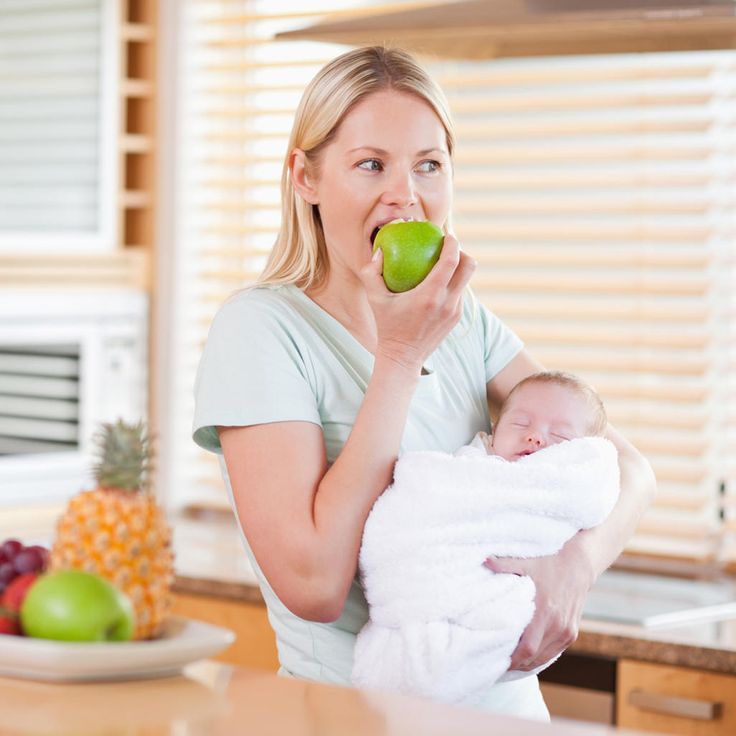
the next day was a day off, and it was possible to sleep at least until noon. Mothers were the first to wake up, quickly getting up, yawning and rubbing their swollen eyes, went out into the corridor, picked up dresses, trousers, gloves, bows, masks lying on the floor. the clothes were wrinkled, stained and dripping, they smelled strange and creepy, so the mothers quickly stuffed everything into thick garbage bags prepared in advance, and then, to be sure, into another one, and tied it tightly. the bags were put out the door - they will take them out later. in the kitchen on the table, in one of the unwashed glasses, there was money - round, heavy, medal-like coins. the mothers poured the coins into their palms without counting them, hid them in the coffee tin, and smiled for the first time that morning.
___________________________________
topics from varjanis : Today we have a revival on schedule and They left, left and left,
so let varjanis drive!
Tags: tags, tags-34
Angarsk urban district - official website
A promo page has been launched on the website of the Federal Tax Service of Russia, which describes in detail which tax and reporting benefits apply to mobilized citizens. So, for them, the deadlines for paying taxes, fees, insurance premiums, reporting and providing notifications are postponed.
So, for them, the deadlines for paying taxes, fees, insurance premiums, reporting and providing notifications are postponed. 03.11.2022
About the need to register in the national labeling system "Honest Sign"
but not registered in the information labeling system, about the need to register in the national labeling system "Honest Sign" introduced in Russia.
03.11.2022
You can quickly find out about the resulting debt by phone or e-mail by agreeing to be informed
Taxpayers (payers of fees, insurance premiums and tax agents), by submitting to the inspection consent to be informed about their arrears (debt) on taxes, penalties, fines and interest, may receive notifications in the form of SMS messages to the phone number or email address specified by them.
11/01/2022
Legal consequences of declaring a citizen bankrupt
In accordance with paragraph 3 of Article 213.28 of Federal Law No. 127-FZ dated October 26, 2002 “On Insolvency (Bankruptcy)”, after completion of settlements with creditors, a citizen declared bankrupt is released from further fulfillment of creditors’ claims, not declared during the procedure for restructuring the debts of a citizen or the sale of property of a citizen.
11/01/2022
Support for educational and patriotic events dedicated to the 80th anniversary of the Battle of Stalingrad
The program includes five video lessons (from November 1 to November 15, every Tuesday and Thursday), online meetings with interesting people (historians, writers, museum and archival workers, and others). The result will be the Internet championship "80 years of the Battle of Stalingrad", which will be held on November 17.
31.10.2022
On detection of food products with violations of established requirements in the territory of the Russian Federation
Rospotrebnadzor Administration for the Irkutsk region received information about the detection of fresh sweet red pepper in food products, country of origin - Islamic Republic of Iran, date production/packing date: packed 07/28/2022, harvest 2022.
31.10.2022
Month of quality and safety of meat and other products of animal origin will be held in the Irkutsk region within the framework of which raid measures will be carried out to suppress the trade in meat and other products of animal origin in places not designated by local governments.
31.10.2022
The Give Life to the Planet Charitable Foundation is accepting applications for the environmental award of the Irkutsk Region “I Do for the World”
for the world" at the end of 2022.
Purpose: to provide recognition to the participants and authors of environmental projects in the Irkutsk region (individuals and legal entities, communities), as well as to create the image of a hero of our time in the field of ecology.
31.10.2022
About the closure of the railway crossing at the Kitoi-Kombinatskaya station
Due to the scheduled maintenance work on the track, the crossing to 5142 km of the Kitoy-Kombinatskaya station will be closed on November 1 (from 12.00 to 12.00) and 12.00. November (from 12.00 to 19.00).
October 28, 2022
Information message district without a permit for the installation and operation of advertising structures in accordance with the current legislation on advertising in violation of the norms and requirements of the Federal Law "On Advertising"
28. 10.2022
10.2022
Register on gosuslugi.ru and get public services without queues and complications
period until 2030”, the national project “Digital Economy” and the regional project “Digital Public Administration”.
10/26/2022
Russian Post again entered the top 20 best postal operators in the world
Russian Post entered the list of the strongest postal operators in the world according to the Universal Postal Union (UPU). According to the main rating indicator - the integrated index of postal development - the company took 20th place among 172 participants from different countries. The UPU gave the highest rating to the Russian Post's ability to adapt to external changes. According to this parameter, it is on the tenth line in the world.
10/26/2022
Voting for settlements that will be further connected to high-speed Internet and telephone services
Ministry of Digital Development, Telecommunications and Mass Media of the Russian Federation The federation votes for settlements, which will be connected to high-speed Internet and telephone services in the future.




